The following seven products were chosen by a committee of industry professionals and dairymen as the newest, most innovative dairy products and will be showcased during World Ag Expo Feb. 14-16 in Tulare, California. Progressive Dairyman asked each of the product inventors or sponsoring companies to discuss how their products fill an industry need. Photos in this section are courtesy of World Ag Expo or the company marketing the product.
AMR
Marketed by DeLaval
Booths
6725-6730
DS93-DS96
Progressive Dairyman first featured the AMR and the family using it on a dairy in Sweden in 2011.
In addition to the article, click here to watch a video preview of the new automated 24-stall rotary parlor available on YouTube. The video has received more than 2,400 views.
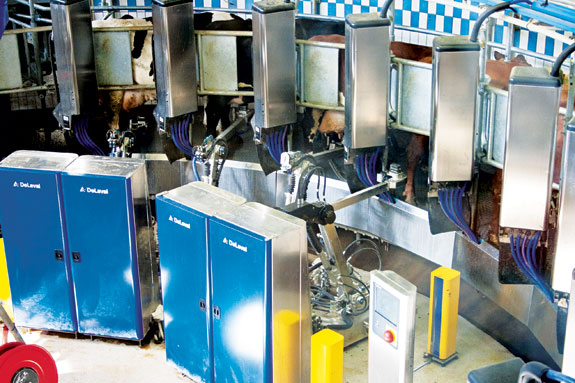
Last issue we reported on interest in the U.S. for such a parlor. DeLaval experts indicated, “Most of the interest has come from farmers with herd sizes ranging from 300 to 900 lactating cows.
Dairy producers milking in excess of 1,000 cows have indicated an interest in utilizing multiple 24-stall parlors to effectively fulfill their milking needs.”
DeLaval says it is currently on track to have its new automatic milking rotary parlor in the U.S. in less than three years. It is working with U.S. regulatory agencies to ensure introduction of the technology within that timeframe.
In addition to the unit already in operation in Sweden, there are currently three other robotic milking rotary parlors in some stage of construction.
The Dornauf Farm in Tasmania, Australia – The Dornauf family in Tasmania will be the first commercial installation. Today three generations of the family run three dairy operations and milk more than 1,100 cows. A completely new site will be set up for the project and will be built up during the next two to three years into a 500-600 head grazing operation with a voluntary cow traffic flow.
The Laproma Farm in Schlossvippach, Germany – The Laproma Farm is currently milking 900 cows and sees opportunities for growth. A whole new site will be set up for the installation and will consist of a new barn and dairy center that will be built up in two phases from 2011-2013 for an additional 800 cows. The first milking is planned for September 2012.
Swedish Livestock Research Center in Uppsala-Lövsta, Sweden – The Swedish University of Agricultural Sciences’ new Swedish Livestock Research Center will be equipped with an automatic milking rotary parlor as well as other single-unit stationary robotic milking units. The opening ceremony for the center will be held in late spring 2012.
coloQuick
Marketed by Golden Calf Company LLC
Booth
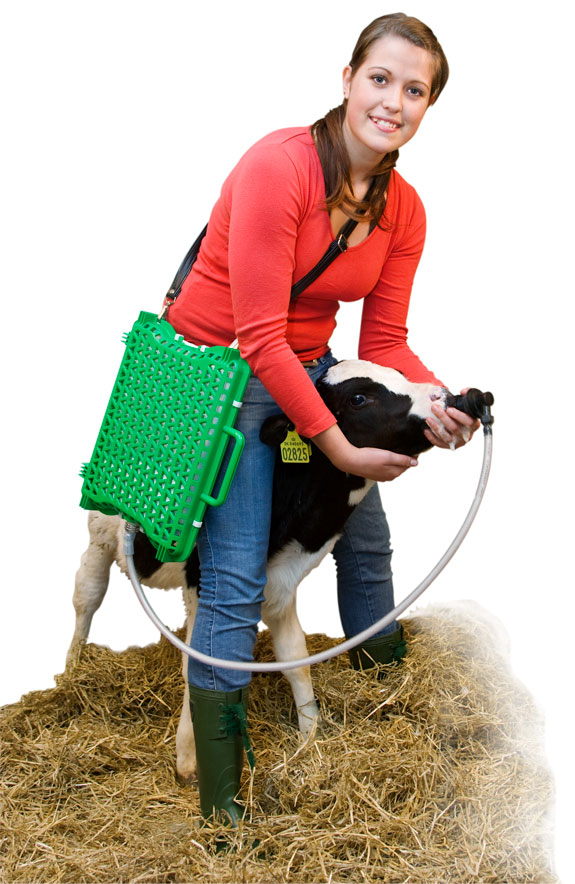
FCDC 6331
See updates and new accessories available for the coloQuick colostrum thawing and pasteurization system as we revisit this previously featured New Technology in our next issue of Progressive Dairyman .
We first wrote about this system in March 2011. Since then the article has received more than 150 unique hits on our website.
ai24 SCR HR-Tag
Marketed by Semex and Micro Dairy Logic
Booth 6413-6415
What’s the history behind the launch of this product?
Semex and Micro Dairy Logic have had shared marketing commitments in the U.S. since April of 2009. Early this year, we looked at an opportunity to bring the HR tag to the U.S. market.
We looked at timing in the marketplace, and it really seemed like the clients were ready for the next step in whole-herd monitoring because we had already seen great success with the H-tag, the predecessor of the HR tag.
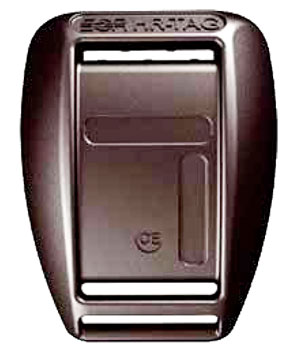
Why is there a need for this product?
I think there is a definite need on the producer level and the consulting level to have the ability to track and record real-time heat and rumination data.
With the availability of rumination monitoring, producers are able to get a correct snapshot of what is going on with an individual cow. However, our software also has the capacity to monitor cows on a group or whole-herd level.
What brought about this product’s creation?
This technology is very advanced and provides a lot of information because it does incorporate heat data plus rumination monitoring. It’s more valuable to users to have this incorporated as one single system on their operation.
What type of dairy producer do you think this product will most benefit?
Really any dairy of any size will be able to use this technology. We have the capability to go from a fairly traditional dairy to a very large-scale operation.
How do you imagine most dairy producers using the product?
I think the more information a producer has, the more valuable the technology becomes. At the same time, the information has to be presented in a friendly format.
Our software is able to concentrate on the things that are very important to all dairymen and can also be customized to meet a producer’s individual needs and management practices.
How will your product make a dairy more profitable and/or more efficient?
The main benefit we see with the rumination data capabilities is the ability to monitor pre-fresh cows through the transition period. If we can help cows transition better through calving and then through the start of their early lactation, the better off they’ll be long term.
When was the product introduced?
We officially launched this product at World Dairy Expo in October.
Why the name?
SCR is the manufacturer of the tag. The H in HR stands for heat and the R stands for rumination.
Hoof-Tec Complete
Marketed by Hoof-Tec Footbath Solutions
Booth 6000
Manual dosing of footbath products is typically inexact and inconsistent. Fully automated footbath systems provide consistent application but can be very costly.
Rosemary Smithyman, co-owner of Hoof-Tec Footbath Solutions, says their system is a marriage of an excellent footbath chemical product and an affordable delivery system that will create the correct footbath solution every single time.
What’s the history behind the launch of this product?
SMITHYMAN: The lameness level on many dairies is too high. On some dairies it can exceed 25 percent of the herd and has a great economic impact on dairy producers. Infectious conditions such as digital dermatitis or foot warts can be addressed through a successful footbath program.
However, most footbath programs are costly, toxic, difficult-to-apply and not successful. We set out to create a footbath system that would be affordable to install, safe to use and dramatically reduce digital dermatitis on dairies.
What brought about this product’s creation?
SMITHYMAN: In a word – passion. We are dedicated to helping dairy producers in reducing lameness.
What type of dairy producer do you think this product will most benefit?
SMITHYMAN: Anyone who is serious about reducing infectious claw conditions on their dairy. Our system requires no large initial capital outlays, infrastructure changes or long-term contracts.
How do you imagine most dairy producers using the product?
SMITHYMAN: The system is easy to use. Workers clean out the footbath then simply turn a valve to re-fill the bath. The dosing system takes care of the rest.
We determine how many cow passes the bath will accommodate before it needs to be changed. Most of our customers achieve and maintain good results using our system one milking shift per day three days per week.
When was the product introduced?
SMITHYMAN: The system’s all-in-one liquid was introduced in 2010. It has been very successful on dairies – being applied either by drum pump or used in existing automatic footbaths. Our system’s water-driven pump application was introduced earlier this year.
Any products in working circulation?
SMITHYMAN: Yes. We have installed the system on dairies in California, Texas, New Mexico and Arizona.
What makes this product stand apart from others?
SMITHYMAN: The consistent quality, safety and ease of use with this system distinguish it from anything else in the marketplace. By having a perfectly dosed footbath each time, you reduce your margin of error and improve the effectiveness of your footbaths.
Hoof-Tec products contain no antibiotics, no formaldehyde or glutaraldehyde and create no dangerous fumes. This product is bad for the warts, but good for workers and cows.
In addition, our people set us apart. Hoof-Tec provides the expertise to create a footbath management program tailored to meet the needs of each of our customers. If a customer has a question or concern, he or she can call me on my cell phone.
I co-own the company and worked on developing this product. I take great pride in our products and take great interest in each of our customers.
How will dairy producers adapt this kind of technology for use in their operations?
SMITHYMAN: Sometimes the simplest solution is the best solution. Our delivery system is beautiful in its simplicity. With no electricity or air needed, it is easy to install and begin using immediately.
Hoof-Tec is distributed nationwide through animal health suppliers, dairy equipment and chemical companies, and veterinary clinics.
Tire Pressure Monitoring System
Marketed by Valley Irrigation
Booth NS20-24
Valley Irrigation has developed its Tire Pressure Monitoring System for pivot irrigation systems. John Rasmus, product manager for Valley Irrigation, gives further insight into what makes the product unique and how it can save you money in the long run.
What was the history of the design for this product?
RASMUS: It was originally designed for Navajo Agricultural Products Industry (NAPI). Until now, there hasn’t been a way to monitor tire pressure on your irrigation equipment.
NAPI had a large number of irrigation pivots, and they had a real problem with tires going flat. That was how it all started, then once it was developed, we decided to open it up to the rest of the market.
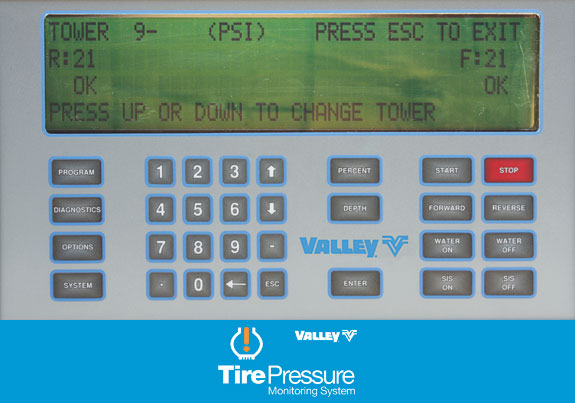
How long was the product in development?
RASMUS: Close to a year.
When did you launch the product?
RASMUS: It will be officially launched in January 2012.
Do you see a specific type of dairyman who might use this system?
RASMUS: Anyone who uses pivot equipment will benefit from this technology, regardless of the crop type. Obviously you will be able to save the time and expense of fixing pivot tires if you know in advance that there is a leakage problem on the tire. It’s not limited to a particular part of the agricultural industry.
Are there any competitors out there making a similar product?
RASMUS: No, we are exclusive.
What are the ramifications if you run a pivot with a flat tire?
RASMUS: The repair costs can be fairly expensive, running between $1,000 and $1,500 easily. That could include possible damage to the tire, the rim and potentially the gearbox, if it is run long enough.
The Pro2 Panel works very similar to the truck industry, where there is a tire sensor on each tire. The monitor can identify which specific tire is low. It will tell you which tower and tire you’re looking at so you can identify it exactly.
Obviously, if you know that you have a potential problem, not only can you save the expensive repair costs, but you can fix the problem next to the pivot road rather than driving out into the middle of the field and possibly destroying crops. That saves time and labor.
Are there any options available with the system?
RASMUS: There is a water pressure option that measures the water pressure at the end tower. It’s measured on the same system.
Waterproof V-Neck Scrub
Marketed by Udder Tech
Dairy Center
Booth 6724
For the second year in a row, World Ag Expo honors a new product from Udder Tech – the Waterproof V-Neck Scrub. Cheryl Mohn, owner of the Minnesota-based company, explains how its newest unique piece of veterinary apparel came into being and why the recognitions for its innovations keep coming.
What is the history behind the launch of this product?
MOHN: Veterinarians were asking us for something waterproof that they could use for surgeries and for doing herd checks. They’ve asked for the short sleeve with the elastic so they can put their sleeve under it. They also wanted the easy off-and-on design of a fabric scrub – but a regular-fabric scrub would soak through.
When you’re working with animals, you end up getting wet and dirty. The waterproof fabric is washable and it dries in the dryer. The fact that it is waterproof and doesn’t soak through is what makes it desirable.
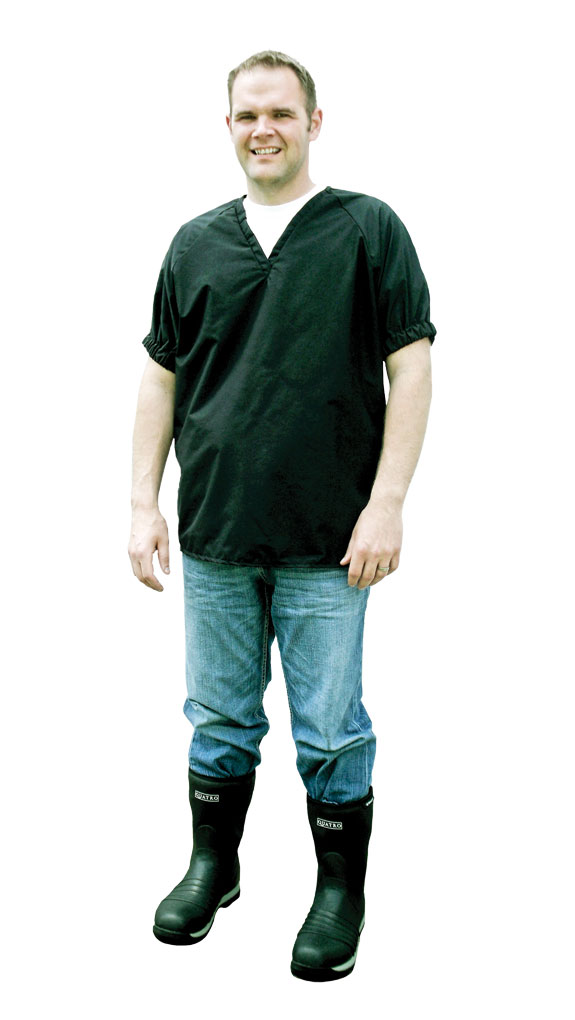
Who is purchasing this product? Do dairymen use it?
MOHN: Veterinarians are the main purchasers of the scrub. It just depends on how much veterinary work the dairyman is doing.
Some of the larger dairies have someone on staff that assists veterinarians or does some of the veterinary work on their own. Those would be the two end-users we would see as customers.
How long was it in development?
MOHN: Our development process is not that long, usually only a couple of months. We tried a few different designs and ended up with the pullover style. We had been trying to do some kind of a wrap one, but it got a little cumbersome. So the best style was the V-neck. Easy off, easy on.
Does any of your competition carry a similar item?
MOHN: There are veterinary scrubs from different companies, but none that have the waterproof fabric. That’s what makes our scrub so unique.
This is your second time receiving recognition for a new product from the World Ag Expo. Why do you think that is?
MOHN: As previous dairy producers, we understand the industry. We also try to listen to our customers, and a lot of times the best ideas come from the field. When we’re at trade shows, it’s a great opportunity to talk with customers.
We have many loyal customers who have gotten to know me and they’ll call me up and say, “Hey, can you help me with this, Cheryl? We’re having a problem.”
Our award winner last year was a jacket that had a thumb hole sleeve. The issue was that dairy workers’ wrists were getting irritated. “How can we prevent wrist irritation?” a client asked. The jacket was an answer to that question from a dairy producer in California.
Half of it is knowing the industry; the other half is listening to our customers. Many times a new product evolves because we hear from a few different people who are having the same issue.
DewPoint
Marketed by Staheli West
Booth S39
According to their brochure, the DewPoint 6110 allows hay producers to break the “time” barrier. Dave Staheli, owner of Staheli West, Inc., says the patented technology allows commercial hay growers to bale hay any time after the crop is sufficiently dry, without the need to wait for natural dew.
What is the history behind the launch of this product?
STAHELI: We originally developed the product 15 years ago. We’ve been using this process in our own operation. Since then, it has advanced through several stages of progress.
We finished development of the current configuration and released it on a limited basis to the market just two years ago. The interest has really started to pick up, and we have released it to the market in a major way now.

Why would a farmer need this product?
STAHELI: One of the main challenges in forage baling operations is to get good, natural conditions to bale with so that hay will be not damaged. This new technology allows a baler operator to create optimum moisture conditions instantly so that hay can be baled any time after it is dried.
It vastly expands the window for baling opportunities from an average of about 1.5 hours per day to 12 to 24 hours. There’s hardly ever a day that you can’t get in at least 12 hours of baling time with this.
It does two things: First, it gives you a much higher-quality bale of hay because as you are baling you can inject the right amount of moisture into the hay in the form of steam.
Second, it cuts down on the capital expenditures for the baling operation. For instance, if an operation is using four balers and four tractors, he could now use one tractor, one baler and one DewPoint machine to do the same amount of work. Those two areas are where the real value of the machine is.
How does your product stack up against the competition?
STAHELI: There really isn’t a competitor. There are some processes out there that use water to put a cool atomized mist on hay prior to baling. Those processes can help in the right conditions but are still limited by wind, temperature and sunlight conditions.
Our “dew simulation” process is totally different in that it uses steam as the moisture medium. Steam will instantly condense into the crop tissue as soon as it touches the hay; there is no wait time. So we can apply steam to hay right in the baler as it is being picked up and then again a little further back in the packer area of the baler.
You can control the amount of moisture you put into the hay as you bale according to the readings you’re getting back from the baler. That way, you can make sure every bale is treated consistently and there is no guesswork.
How many units are there in circulation?
STAHELI: This past year, we’ve delivered 16 machines in the west from Texas to Oregon. We are currently building eight more machines that have already been sold. We anticipate there will be 40 machines in service this coming spring.
What scale of operation are you finding to be the right type for your machine?
STAHELI: Generally, farm operations with 1,000 acres or more really benefit from this machine. Some operations smaller than that have purchased the machine, but generally operations running more than one big baler are buying it.
If the operation is running two or more tractors and balers with multiple operators, then our machine becomes economically feasible in an operation.
What do dairy producers like about the hay that comes from this machine?
STAHELI: They are really pleased with the consistency of the bales – the feed value. One very large California dairyman claims hay baled with our machines is the best, most consistent hay he can buy. Every time he buys our hay, he knows what he is going to be getting.
We continue to get great feedback from current machine owners. Several of them have bought a second machine for this coming year because the process is working well for them and they have enough acres to justify it. PD



